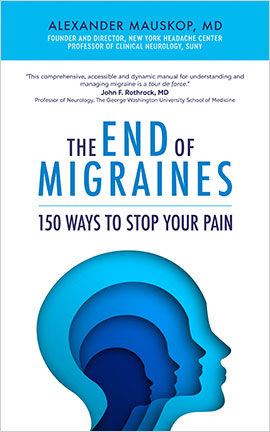Chronic migraine, vestibular migraine, hemiplegic migraine and any other complicated form of migraine disease really needs to be treated by a headache specialist. These doctors have a skill set that surpasses other generalized doctors because they have completed a fellowship in headache medicine.
This fellowship is a yearlong specialized training program that trains these doctors to recognize, diagnose and treat all forms of headache. While we tend to focus on migraine on this website and in our communities, headache specialists will also treat other headache conditions like cluster headache, hemicrania continua, low and high intracranial pressure headaches to name a few.
Prior to seeing a headache specialist, it’s not uncommon for some to be treated for the wrong condition for years.
Without a doubt, a headache specialist is the right choice for any of us struggling to find a treatment plan that works. However, when the number of headache specialists in the United States is under 700 and approximately four million chronic migraine patients and 40 million others with episodic migraine need treatment …scheduling to see one of these specialists can be a challenging and frustrating experience.
** While Migraine Strong writes about the latest in migraine treatments, this is not medical advice. We are patient educators and all information you read should be discussed with your doctor.
Migraine Facts
The reason why we as a community are always talking about headache specialists is because migraine is a significant problem. Let’s break down some facts about migraine so we can all be on the same page. According to the World Health Organization:
- Migraine is the 2nd most disabling illness in the world;
- Migraine is the 3rd most prevalent illness in the world;
- 12% of the population has migraine – including children;
- About 90% of migraine is hereditary;
- Every 10 seconds, someone in the U.S. visits the emergency room complaining of head pain…1.2 million visits are for acute migraine attacks;
- More than 4 million people have chronic migraine (at least 15 attacks a month);
- More than 90% are unable to work or function during an attack
Lack of headache specialists
The reality of the situation is there aren’t enough headache specialists around to treat all of the chronic migraine patients let alone the 40 million episodic patients.
Current medical students receive approximately one hour of training on headache in medical school. This is in spite of the waiting rooms of general practitioner’s offices having 1 in 4 patients waiting to be seen for headache related issues.
What’s a person with migraine to do? We are fortunate to live in a time when we are able to share information around the internet. Excellent information is available online and you can become your own best migraine advocate.
Next Steps
With education, you can approach your current practitioner or neurologist and partner with them to treat your migraine more comprehensively.
1. Assemble your migraine knowledge
It’s easy to find information about migraine online. The problem is making sure the information you are locating is accurate and factual.
We have a list of resources which is a good place to start. These are trusted websites in the migraine community and will provide you with the latest in migraine research and news. Below, we have assembled some other options for places to get information to build your migraine knowledge. This will allow you to become your own migraine advocate so you can partner with your doctor.
Options for education
- Purchase the Migraine World Summit – Each year the Migraine World Summit assembles a group of renowned migraine experts to discuss the latest migraine treatments and information. The topics covered include things like sleep, research, treating migraine attacks, vestibular migraine, drug interactions, hormonal migraine, diet, CGRP, Botox, medical marijuana, refractory migraine, ditans and gepants and the list goes on and on. Each talk is posted online for free for 24 hours. The transcripts of the talks come with the purchase of the Summit. These transcripts can be used as references for your doctors when you want to try something new. Almost like a referral. Also a copy of the Medical Treatment and Non-Medicinal Treatment Guides are really great information all in one place.
- The American Migraine Foundation has an extensive Resource Library with articles explaining the timeline of a migraine attack, new medications available, best treatment practices and much more.
- Find Information from trusted sources like Timothy C. Hain, MD. Doctor Hain specializes in neurotology and vestibular disorders. This link shows his plan for migraine prevention. This is obviously just one option, but it’s a place to start if you are working with a non-headache specialist and need some ideas.
- Listen to experts, like neurotologist Dr. Michael Teixido, give talks on YouTube like this one explaining the pathophysiology of different types of migraine and associated symptoms. Dr. Teixido specializes in hearing and balance disorders including vestibular migraine.
- Read The End of Migraines: 150 Ways To Stop Your Pain by Dr. Alexander Mauskop. This book is packed full of ideas to try when it comes to treating migraine. The e-book is very affordable and will be updated frequently by the author. It’s also easy to take with you to a doctor’s appointment and discuss with your practitioner.
2. Partner with your doctor
How do you determine if your doctor is willing to learn about migraine treatments and partner with you? The best way is to be direct and ask. If there’s a treatment you wish to try or a study you’ve read, email the doctor through the patient portal. Do this before your appointment to see if they have time to review. If you don’t have access to a patient portal, call to see how to get the information to the doctor. If that’s not possible, you can try discussing it during the appointment. Understand that they may need time to review the information before making a decision.
Finding a headache specialist
Perhaps your current doctor is not interested in learning about migraine and the various treatments available. It may be time to look for another doctor to partner with. The National Headache Foundation has a search tool on their website to search for doctors with an interest in migraine. You might not find a headache specialist in the city where you live. While it might seem like a long way, it could be well worth the travel for an advocate that holds the key to helping you manage your migraine. Especially if they are willing to see you via telehealth for follow ups after your initial visit.
3. Explore online headache medicine options
The online options available for migraine treatments are ever increasing. These options are not all created equal and it’s important to know what you are looking for when reviewing your options.
The first and most comprehensive option is an online Neurology clinic called Neura Health. Read our review of Neura Health for a complete overview of their offerings and a discount link. We have been recommending Neura Health for several years for many reasons. They offer a robust program and personalized treatment plans with a dedicated care team, including health coach and neurologist. Second, seeing a trained headache specialist is just days away as opposed to having to wait months for a local headache specialist. This is a huge benefit.
Also make sure to check out the Neura Health Instagram account for educational material about migraine and other headache disorders. You can also find interviews with Dr. Tom Berk, Neura Health’s medical director, on our Instagram grid.
Online pharmacies for migraine treatments
There are other online options for migraine treatment which are usually geared more towards those with episodic migraine. These start with consultations that include filling out an intake form and recording two short videos for a doctor to review and make recommendations for migraine treatment. If you already have a medication that you are using or one you want to avoid, you can include that information in your intake forms. One example is Cove which has a number of different prescription medications that you can review to see if they are cheaper than what you are currently paying. Getting a prescription through them opens up their pharmacy options and allows purchase of these sometimes cheaper medications.
If you already have a prescription for a medication that is available in a generic form and are looking for a cheaper purchasing option, check out Mark Cuban’s online pharmacy Cost Plus Drug Company. While they don’t carry all medications prescribed for migraine, there are quite a few generics available and the prices are very competitive.
Specialized programs for migraine
The Cleveland Clinic has developed an Online Headache Education Program (OHEP). The program offers eight interactive online visits with a PA-C who provides help to improve headache pain and manage triggers. The support is customized and medications can be adjusted. The program requires an evaluation with the Headache and Facial Pain team at Cleveland Clinic’s main campus or regional facilities (Northeast Ohio, Florida and Las Vegas). The service is billable to health insurance and the program costs $49 per session out of pocket.
4. Travel to a headache specialist near or far
If you have worked with a local doctor and still haven’t been able to make any headway with your migraine treatment plan, it might be time to consider traveling to see a specialist for a consult.
- Consider traveling to see a specialist for a consultation and bringing back a plan to implement with your local neurologist or general practitioner. Check with your local doctor to ensure that they are on board with a second opinion and willing to work with you on the new strategy.
- Visit a Headache Center – These centers will offer more options including some inpatient therapies if needed. Some of them will offer migraine specific programs and others will tailor a program specific to you after your evaluation.
- Be aware that traveling out of state to see specialists or to visit a headache center may not be covered completely or at all on your insurance plans. Make sure to verify coverage details before committing to treatment that might be out of pocket.
5. Get involved with social media
There are some really amazing people and organizations on social media who are constantly providing educational information about migraine. Go check out the ones we follow on Instagram, Facebook and X and you will have some great information in your feed about how to manage migraine!
A place to start
This is by no means a comprehensive list, but merely a place to start. Do you have a favorite migraine information source not included here? Have you successfully partnered with a non headache specialist to successfully manage migraine? We’d love to hear from you. Come join our private Facebook group for more in depth discussions.



Just wanted to let you know that The Cleveland Clinic no longer has the IMATCH program
Thank you! We have updated the article. Appreciate the feedback!
I’ve been a long time migraine sufferer! I just discovered your site and I love that you called out cleveland clinic! Jena who does the online program is my PA and I love her! It’s so neat to make a connection!!
This was a fantastic article with tons of well researched resources!
Thank you as always Eileen and team 👍
Thanks Juli!! We appreciate your support!!